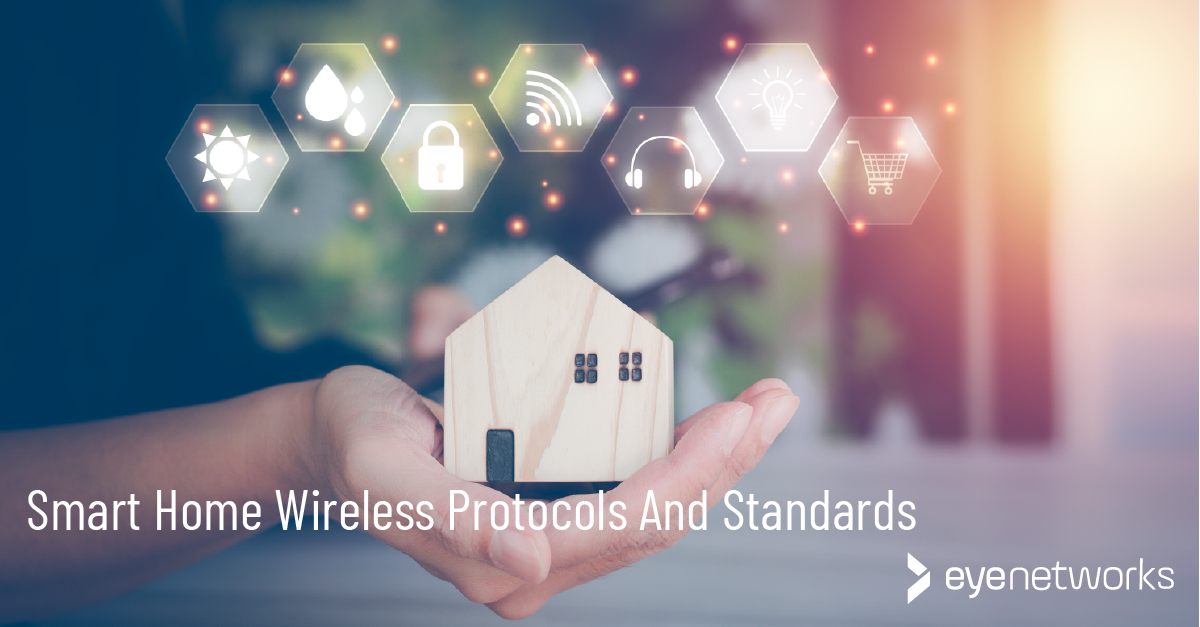What standards exist for smart homes and wireless products, apart from wifi?
Wifi is the most important wireless infrastructure in any smart home. Many smart devices depend on wifi for both local communication and connecting to the internet. Find our overview of wifi standards here: Wi-Fi 7, 6, 5: Wireless generations and standards .
Apart from wifi, there are a number of standards and protocols exist that are specifically intended for wireless communication between devices over short distances, typically for wireless accessories and in smart home solutions and smart products, what is also referred to as the Internet of Things or IoT.
| Standard/protocol | Description |
|---|---|
| Bluetooth | A wireless standard for short distances that is often used for direct communication between devices. BLE (Bluetooth Low Energy) was specially developed to reduce power consumption, which is important for battery-powered smart devices. In some situations, Bluetooth can create problems for wifi – see also: 10 things that interfere with and block WiFi signals Bluetooth was first invented in 1994 and is now maintained by the Bluetooth Special Interest Group . Typically used in: Smart watches, headsets, smart locks, sensors, lighting control systems and simple smart home devices that often use the mobile phone as a hub. |
| Matter | A smart home protocol developed to make it easier for smart home devices from different brands to communicate seamlessly with each other. Matter supports a variety of network technologies, including wifi, Ethernet, Thread and Bluetooth. Matter was launched as late as 2022. The protocol is supported by technology giants such as Google, Amazon, Apple and Samsung and is rapidly growing in popularity. All of eero ‘s wifi devices have an integrated smart hub that supports Thread and Matter in addition to ZigBee. Maintained by the Connectivity Standards Alliance . Typically used in: Smart lights, thermostats, sensors (motion, temperature, humidity), locks and other smart products. |
| Thread | A newer network protocol based on IPv6 and designed to create a more secure and reliable mesh network for smart home devices. Thread is energy-saving and offers high interoperability. Thread is integrated with the Matter protocol, is used by major players such as Google and Amazon/eero and is rapidly growing in popularity. All of eero ‘s wifi devices have an integrated smart hub that supports Thread and Matter in addition to ZigBee. Maintained by the Thread Group alliance, which was entered into in 2014. Typically used in: Smart lights, thermostats, sensors and other devices that need fast and reliable communication. |
| ZigBee | A low-energy standard designed for wireless mesh networks. Zigbee is therefore particularly well suited for sensors and other devices that need a long battery life and is often used where high transmission capacity is not required. Using smart products with ZigBee requires that you have a ZigBee hub to manage the mesh network. This can be a separate unit, but it can also be integrated into other products. All of eero ‘s wifi devices have an integrated smart hub that supports ZigBee, Thread and Matter. Maintained by the Connectivity Standards Alliance . Typically used in: Smart lights, thermostats, sensors (motion, temperature, humidity), locks and other smart products. |
| Z-Wave | Low energy standard for smart homes. Like ZigBee, uses a mesh network to increase range by allowing devices to act as “repeaters” that repeat the signal. Typically used in: Smart door locks, lights, sockets, security equipment, and more. Widely used for home automation. |
| 802.11ah | An 802.11 standard intended for lower speeds, longer distances and lower power consumption, i.e. for smart products/IoT gadgets rather than wifi. |
| 802.11ad | In use from 2016. Uses the 60 GHz band and is intended to replace cables between TVs, decoders, projectors and more – the goal is high speeds over short distances. Theoretical top speed: approx. 7 Gbps Further reading: The experts answer: New wireless standard — what can we expect from 802.11ad? |
Article by Jorunn Danielsen
